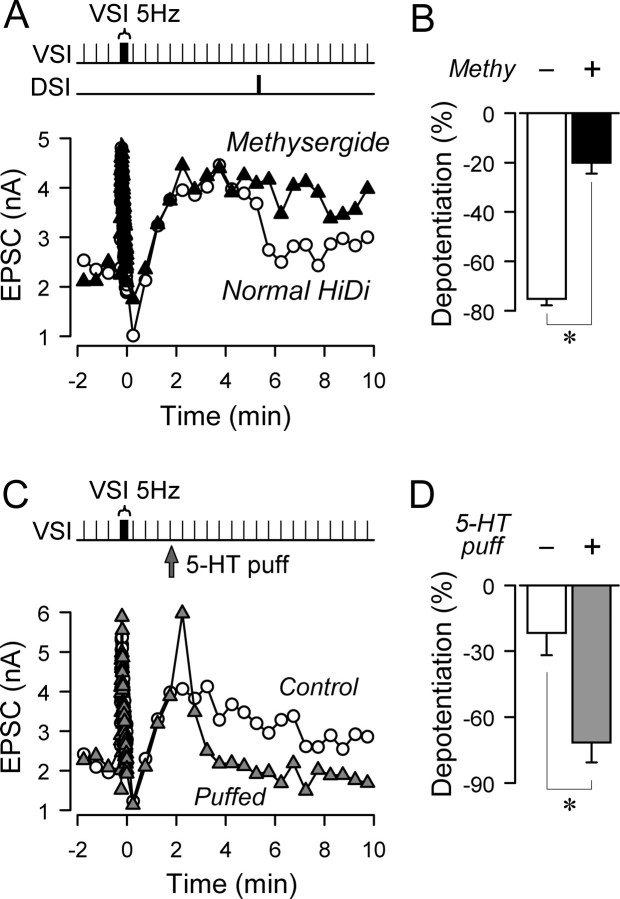Figure 6.
5-HT mediates the DSI-evoked depotentiation. A, The DSI-evoked depotentiation was blocked by a 5-HT receptor blocker, methysergide. VSI-evoked EPSC amplitudes from two trials in the same preparation are plotted; one was recorded in normal high divalent cation saline (Normal Hi-Di, white circles) and the other in the presence of 50 μm methysergide (black triangles). In both trials, VSI was stimulated to fire a train (5 Hz, 15 s) to put the synapse in a potentiated state and DSI was subsequently stimulated (10 Hz, 5 s) 25 s before the next VSI spike. Depotentiation of the synapse occurred in normal Hi-Di saline, but this depotentiation was reduced significantly by methysergide. B, Methysergide significantly reduced the extent of depotentiation caused by DSI stimulation. The extent of depotentiation was shown as a percentage change of the amplitude from the potentiation state (n = 4). C, A brief 5-HT puff mimicked the effect of a DSI spike train. EPSC amplitudes from two trials from the same preparation are plotted. In both trials, a VSI spike train (5 Hz, 15 s) caused the synapse to enter the potentiated state. The control trace (white circles) shows the time course of potentiation in this preparation. A pressure-applied 5-HT puff (100 μm, 10 ms) produced a large transient increase and subsequent fall of the EPSC amplitude, bringing it down to the original level (gray triangles). D, 5-HT puffs caused significantly more decrement than occurred in control trials with no puff (n = 4). In A and C, time 0 is set as the time of the last action potential in the VSI spike train (5 Hz, 15 s). In B and D, asterisks indicate significant differences (p < 0.01 by paired t test).

